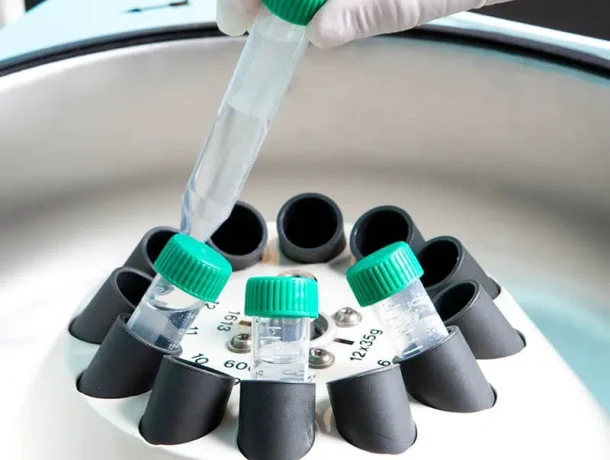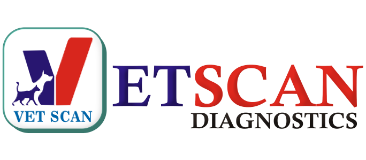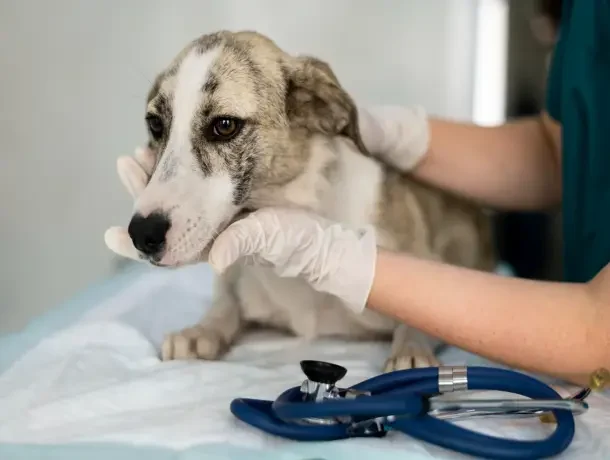Top Veterinary Pathology Labs: Leading the Way in Diagnostic Excellence
Pathology labs are critical to healthcare because they provide vital diagnostic services that aid in illness identification, diagnosis, and treatment. These labs run a variety of tests on blood, tissues, and other bodily fluids to learn important information about a patient’s condition. Pathology labs provide accurate and quick diagnostics, allowing healthcare clinicians to make informed patient care decisions, adjust therapies to specific needs, and track disease development. Top pathology labs use knowledge and technology to provide high diagnostic accuracy, which is critical for successful medical treatments and better patient outcomes.
- Pathology labs examine diverse biological samples (e.g., blood, tissues, and urine) to detect diseases and conditions such as infections, malignancies, and chronic illnesses. Early detection is critical for successful treatment and better patient outcomes.
- Pathology results guide treatment plans based on illness and patient characteristics. For example, genetic and molecular studies can help guide cancer treatments. Regular diagnostic tests allow you to track the success of therapy and alter them as needed.
- Pathology labs use screening tests to discover risk factors or early indicators of disease before symptoms appear. This can include screening for diabetes, cholesterol levels, or cancer.
- Routine diagnostic testing can detect health problems early on, allowing for preventive actions and lifestyle adjustments to lower the chance of more serious illnesses.
- Pathology laboratories confirm or deny diagnoses based on clinical findings or symptoms, providing a definitive diagnosis required for appropriate treatment planning.
- In difficult instances, pathology labs offer second opinions or extra testing to guarantee the accuracy of the initial diagnosis. Pathology labs support medical research by giving diagnostic data for clinical trials and developing novel medicines.
- Pathology lab research leads to the creation of novel diagnostic procedures and technology, which improve diagnosis accuracy and technology, which enhances diagnostic accuracy and patient care.
- Pathology labs maintain high standards to provide accurate and reliable test results. This includes keeping equipment calibrated on a regular basis and following established testing processes. Accredited pathology labs adhere to stringent standards and regulations, assuring high-quality diagnostic results.
- Pathology labs contribute to forensic medicine by supplying critical information in legal situations, such as diagnosing the cause of death or identifying injuries.
- Pathology labs adhere to ethical testing principles, such as informed permission and patient confidentiality. Pathology labs help educate and train healthcare professionals, such as pathologists and medical students.
- Pathology labs contribute to public knowledge of various diseases and the value of diagnostic tests through research and community outreach. Accurate and accurate diagnostic information enables healthcare providers to make more educated decisions about patient treatment, resulting in better outcomes and higher quality of life.
- Comprehensive diagnostic testing lowers the chance of misdiagnosis and improper treatment, resulting in more effective and efficient care.
- Modern pathology laboratories use advanced technologies and automation to simplify testing procedures, increasing efficiency and reducing test result turnaround times.
- Pathology labs collaborate with other healthcare professionals to ensure that patients receive coordinated and complete care.
What Makes a Pathology Lab Excellent

Exceptional pathology labs are marked by several essential elements that contribute to their overall quality and effectiveness:
- Precision in Testing: An outstanding pathology lab guarantees high accuracy in diagnostic tests, which is critical for accurate diagnosis and appropriate treatment planning.
- Quality Control: Regular quality inspections and adherence to stringent protocols help to ensure the dependability of test results.
- Cutting-Edge Equipment: Using cutting-edge diagnostic equipment and technology, the lab can execute complex tests with high precision.
- Innovation: Using the most recent advances in diagnostic technologies leads to more accurate and efficient testing.
- Expert pathologists: Highly qualified staff includes expert pathologists. Skilled and experienced pathologists can interpret test data and provide reliable diagnoses.
- Continuous Training: Continuous training ensures that staff are up to date on the newest pathology techniques and breakthroughs.
- Diverse Services: Provides a wide range of tests, from normal blood testing to specialty diagnostic treatments, to meet a variety of medical needs.
- Specialist Tests: The availability of specialist tests for unusual or difficult conditions improves the lab’s ability to manage a variety of cases.
- Efficient processes: Test results must be processed and reported quickly to ensure timely diagnosis and treatment.
- Effective Workflow: Streamlined procedures and efficient management contribute to speedier turnaround times while maintaining accuracy.
- Clear Communication: Providing clear and actionable reports allows patients and healthcare professionals to make educated decisions.
- Customer service: Customer service focuses on patient care and support. Support and attentiveness improve the overall experience.
- Regulatory Compliance: Adherence to industry standards and regulations, such as those established by accreditation agencies, guarantees that the lab fulfills high-quality requirements. Certifications from reputable organizations give an extra layer of authenticity and trust.
- Hygiene and Sterilization: Maintaining a clean workplace and adhering to strict infection control protocols are essential for the safety of both samples and staff.
- Data Security: Protecting patient information and protecting confidentiality are critical for building trust and adhering to rules.
Top Veterinary Pathology Labs in India

VetscanDiagnostics
Vetscan Diagnostics, located in Delhi, specializes in offering high-quality veterinary diagnostic services that are tailored to your pets’ needs. Their cutting-edge facility is outfitted with cutting-edge diagnostic tools and staffed by experienced specialists committed to providing accurate and speedy findings.
They offer a wide range of tests, including hematology, biochemistry, microbiology, and specialist diagnostics, to ensure accurate and dependable findings for a variety of veterinary needs. Their trained pathologists and technicians have vast experience in veterinary diagnostics, guaranteeing that each test is performed with the utmost care.
Animal Health Diagnostics
Animal Health Diagnostics is committed to offering superior veterinary diagnostic services to protect the health and well-being of your cherished pets. The cutting-edge facility combines advanced technology with a team of seasoned veterinary specialists to provide precise, timely, and complete diagnostic solutions.
Elite Veterinary Pathology
Elite Veterinary Pathology is dedicated to establishing the benchmark for excellence in veterinary diagnostics. Their top facility combines cutting-edge technology with unrivaled expertise to provide precise, quick, and comprehensive diagnostic services for your beloved pets.
Choosing the Right Pathology Lab
Choosing the correct pathology lab is critical to obtaining accurate and reliable diagnostic results. Here are important aspects to consider while choosing a pathology lab:
- Verify credentials: Ensure that the lab is accredited by a recognized body, such as another similar institution.
- Quality standards: Check to see if the lab meets national and international quality standards and regulatory criteria.
- Comprehensive testing: Choose a lab that performs a variety of tests, including routine, advanced, and specialist diagnostics.
- Specialist Services: If necessary, confirm that the lab offers specialist testing related to your health needs.
- Advanced Equipment: Look for a lab that uses cutting-edge diagnostic equipment and technology to ensure accurate testing.
- Track Record: Look into the lab’s reputation for accuracy and reliability in test results.
- Quality Control: Ensure that the lab has strong quality control mechanisms in place to keep standards high.
- Efficiency: Determine whether the lab offers expedited services if needed.
- Professionalism: Look for labs with a reputation for having professional and pleasant employees.
- Customer Service: Evaluate the lab’s commitment to patient care, including easy appointment scheduling, clear communication, and help. Consider the lab’s location, operating hours, and patient accessibility.
- Affordability: Compare the costs of services to ensure they are affordable and transparent.
- Patient Feedback: Look for reviews and comments from previous patients to assess the lab’s reputation.
- Recommendations: Seek advice from healthcare providers or reliable sources.
- Confidentiality: Ensure that the lab follows tight processes to preserve patient data and maintain confidentiality.
- Secure Systems: Confirm that the lab uses secure systems to manage and send test results.
- Proximity: Select a lab that is conveniently located to save commute time. and effort.
- Online Access: Determine whether the lab provides online access to test results and reports for convenience.
Diagnostic Services Provided By The Veterinary Pathology Labs
Veterinary pathology labs provide a variety of diagnostic services to help with the diagnosis, treatment, and management of animal health issues. Here are some of the primary diagnostic services commonly provided:
1. Hematology
- Complete Blood Count (CBC): Assesses blood health, including red, white, and platelets.
- Blood smears: These tests provide precise information on blood cell morphology and can aid in the diagnosis of illnesses such as anemia, leukemia, and infection.
- Coagulation Profiles: These tests evaluate blood clotting functions and aid in the diagnosis of bleeding diseases.
2. Biochemistry
- Serum Chemistry Panels: Tests numerous substances and enzymes in the blood to determine organ function (e.g., liver, kidney) and metabolic health.
- Electrolyte Testing: Determines the amounts of key minerals and electrolytes such as sodium, potassium, and calcium to assess metabolic balance.
3. Microbiology
- Bacterial Cultures: Detects bacterial infections in samples such as blood, urine, or tissue and assesses antibiotic susceptibility.
- Fungal Cultures: Detects and diagnoses fungal infections in different samples.
- Parasitology: Involves examining samples to detect parasitic infections such as intestinal parasites, mites, and ticks.
4. Cytology
- Cytology Smears: Examine cells from fluids or tissues to detect infections, cancers, and other abnormalities.
- Fine Needle Aspiration (FNA): Collects tissue samples for cytological analysis in order to diagnose masses and cancers.
5. Histopathology
- Tissue biopsies: The examination of tissue samples under a microscope to diagnose diseases such as cancer, inflammation, and degenerative disorders.
- Histological Staining: Histological staining employs various stains to highlight certain tissue components and aid in diagnosis.
6. Molecular Diagnostics.
- Polymerase Chain Reaction (PCR): Polymerase Chain Reaction (PCR) detects and quantifies certain DNA or RNA sequences to identify infections, genetic diseases, and mutations.
- Next-Generation Sequencing (NGS): Offers comprehensive genetic analysis to help diagnose genetic diseases and cancer.
7. Immunohistochemistry (IHC)
- Antigen Detection: Detects specific proteins or antigens in tissue samples to aid in illness diagnosis, including cancer and autoimmune disorders.
8. Serology
- Antibody Testing: Identifies antibodies in blood to diagnose illnesses and evaluate immune responses.
- Antigen Testing: Antigen testing identifies specific antigens from pathogens in samples to help diagnose illnesses.
9. Radiology
- X-rays: X-rays are used to diagnose bone fractures, malignancies, and organ abnormalities.
- Ultrasound: Ultrasound is a technique that uses sound waves to create images of soft tissues and organs, which helps doctors diagnose diseases including tumors and fluid accumulation.
10. Urine analysis
- Urine Testing: Analyzes the physical, chemical, and microscopic features of urine to determine kidney disease, diabetes, and urinary tract infections.
11. Endoscopy
- Visual Inspection: A camera-equipped flexible tube is used to visually investigate inside organs and structures for diagnostic purposes, such as foreign bodies or malignancies.
12. Genetic Testing
- Breed-Specific Tests: Identify genetic diseases and hereditary problems unique to various breeds.
- Genomic Analysis: Genomic analysis provides full genetic profiles to help diagnose uncommon genetic illnesses and guide individualized treatment.
These diagnostic services assist veterinarians in precisely diagnosing diseases, tracking health issues, and developing successful treatment programs for animals.
Conclusion
Pathology labs are critical components of the healthcare system, offering vital diagnostic services that support accurate diagnoses, successful therapies, and overall patient management. Their contributions to early identification, therapeutic guidance, preventative care, and research demonstrate their significance in improving patient health and advancing medical science.
Why Choose Vetscan Diagnostics ?
Expertise You Can Trust
Our veterinary laboratory team comprises experienced veterinary professionals specializing in biochemistry, microbiology, hematology, and histopathology.
Cutting-Edge Technology
We invest in state-of-the-art diagnostic technology, ensuring precision and efficiency in our tests. With the latest advancements at our disposal, we deliver timely and reliable results.
Early Detection, Lifelong Protection
Early detection is key to preventive pet care. Our comprehensive range of tests, from biochemistry to histopathology, is designed to catch potential health issues in their early stages.
Compassionate and Seamless Experience
Beyond expertise and technology, we pride ourselves on delivering a compassionate and seamless experience.





























